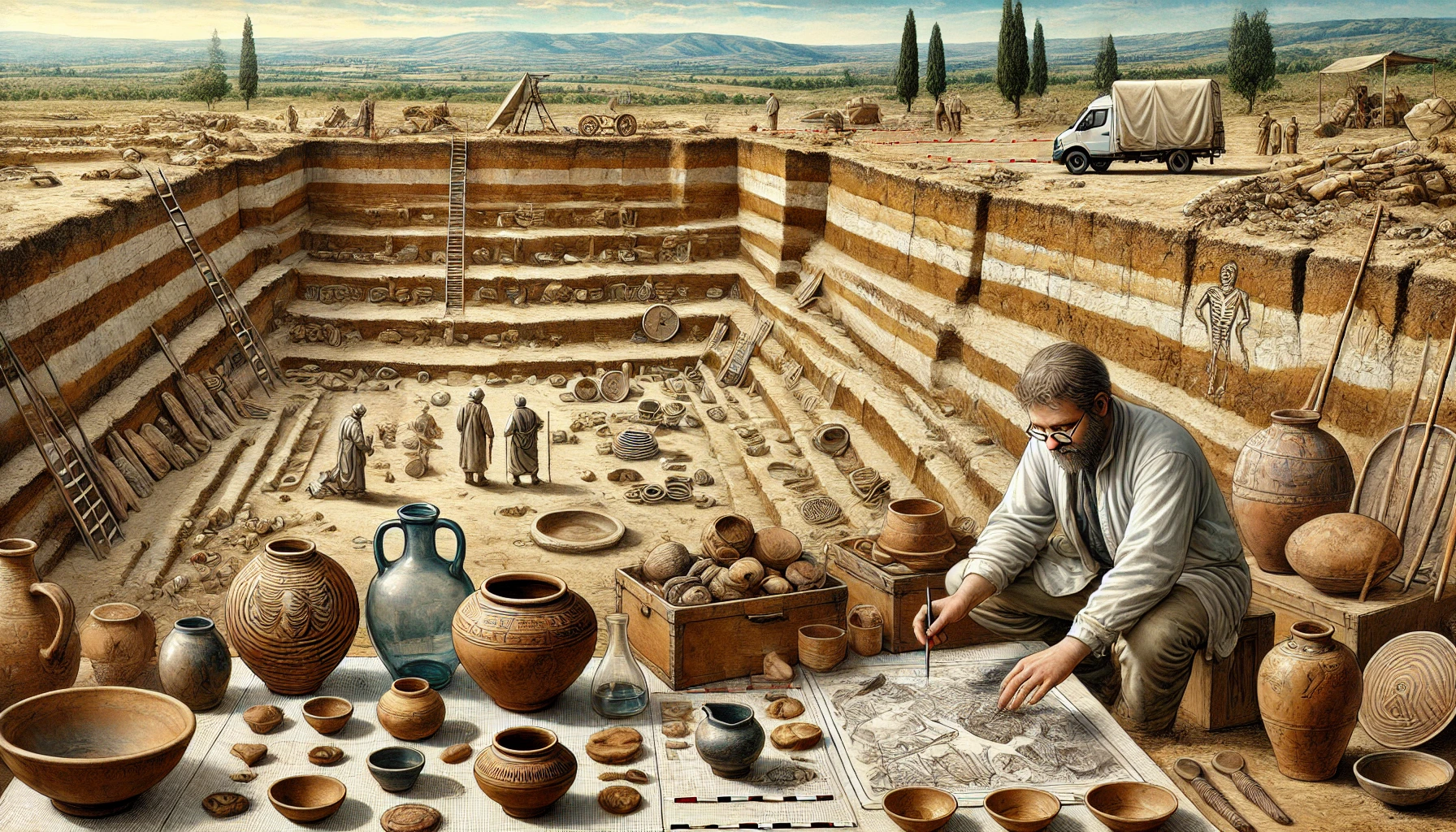Archaeologists seek to reconstruct human life in the past based on the artifacts they find in excavations. They use evolutionary archaeology and ecological theories to analyze changes in artifacts, with an eye toward understanding the social context in which they were used. These studies play an important role in revealing connections between the past and modern society.
The artifacts that archaeologists recover from excavations provide extremely fragmentary information about human life in the past. Archaeology utilizes theories from multiple disciplines to reconstruct human life from this material. Archaeological research is essential to understanding human evolution and cultural development, and in doing so, it also seeks to make connections to modern society.
For example, evolutionary archaeology focuses on the theory of evolution, which views human life as a selection to better adapt to the natural environment, to explain the past. An example of evolutionary theory in action is the study of changes in pottery. This study examined the thickness of cooking pots excavated from a single site over a period of about 1,000 years, starting in the 1st century AD, and the starch content of the grains used in the food that was left carbonized in the pots. The results showed that the thickness of the pots became significantly thinner and the starch content of the grains increased with time. Evolutionary archaeology explains this thinning as an adaptation to changes in the external environment, such as the appearance of more starchy seeds. This explanation is based on the fact that thinner earthenware is functionally superior because it conducts heat relatively better, and that starchy seeds greatly increase their value as food when boiled at high temperatures for long periods of time. In other words, the change in the natural environment that led to the abundance of seeds with thicker shells and higher starch content allowed for an increase in the amount of seeds that could be harvested, which by their nature require long periods of heating, so earthenware with faster heat conduction was used.
Archaeological research also focuses not just on the physical properties of an artifact, but also on understanding the social context in which it was used. For example, the reason why a certain type of earthenware was widely used at a certain time may have more to do with social and cultural changes at the time than just functionality. Through this perspective, archaeologists try to comprehensively understand the functional and social meaning of an artifact.
However, later, more sophisticated dating methods were used to compare the changes in earthenware thickness in detail, and it was found that rather than a gradual change, the thickness of earthenware changed abruptly around the 4th century, with little change thereafter. It was also found that it was only after the 5th century that foods with a high starch content became common. This makes the natural selection explanation for the change in pottery thickness less compelling.
While it is important to find out what caused the change in pottery thickness to occur in order to understand the implications of thinner pottery, it is also important to note why thinner pottery was used for longer periods of time. For example, the use of grains with high starch content as baby food may have helped to increase fertility rates as women’s lactation periods were shortened. An ecological explanation for the long-lasting use of thin earthenware could be based on ecological theory, which attributes the long-lasting use of thin earthenware to the active selection of humans for baby food, rather than selection for adaptation to the natural environment. Ecological explanations are based on an evolutionary perspective, but focus more on the selection process as a function of our ability to think rationally.

Unlike evolutionary archaeology, there is also a perspective that believes that it is more important to find the context in which an individual artifact was used rather than functional factors when interpreting the meaning of an artifact, and attempts to explain the meaning of an artifact by socio-cultural factors such as the social position of the person who used the artifact and changing tastes. This view explains the rapid thinning of pottery around the 4th century as follows. This is because active exchange between groups introduced new ceramics and people came to prefer them. This sociocultural interpretation broadens the scope of archaeological research and provides important clues to understanding the social and cultural currents of the time, rather than just the functional aspects of the artifacts.
The rapid accumulation of artifactual data from excavations and the development of new measurement methods thanks to the advancement of neighboring sciences allows for a wide variety of interpretations. Therefore, it is important to be open to new data and methods, rather than sticking to a specific theory. Archaeological research is a constantly evolving discipline that allows us to better understand the past and learn lessons for the present and future.